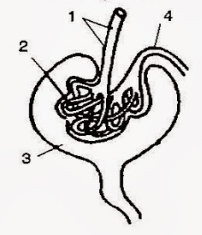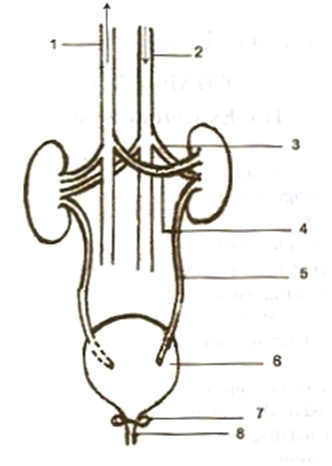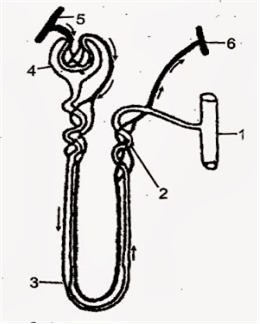Study the diagram given below and answer the following questions: 
(i) Name the region in the kidney where this structure is present
(ii) Name the parts labelled 1, 2, 3 and 4.
(iii) Name the stages involved in the formation of urine.
(iv)What is the technical term given to the process occurring in 2 and 3? Briefly describe the process.
(i) The given structure is present in the renal cortex of the kidney.
(ii) Parts are;
1. Afferent arteriole
2. Glomerulus
3. Bowman's capsule
4. Efferent arteriole
(iii) Stages involved in the urine formation are:
1. Ultrafiltration
2. Reabsorption: Selective reabsorption and tubular secretion
(iv)The technical term given to the process in 2 and 3 is ultrafiltration.
The blood flows through the glomerulus under great pressure, which is much greater than in the capillaries elsewhere. The reason for this greater pressure is that the efferent arteriole is narrower than the afferent arteriole. This high pressure causes the smaller molecules of the blood to filter out through the glomerulus into the renal tubule. This filtration under extraordinary force is called ultrafiltration. The fluid entering the Bowman's capsule is called 'glomerular filtrate'.







